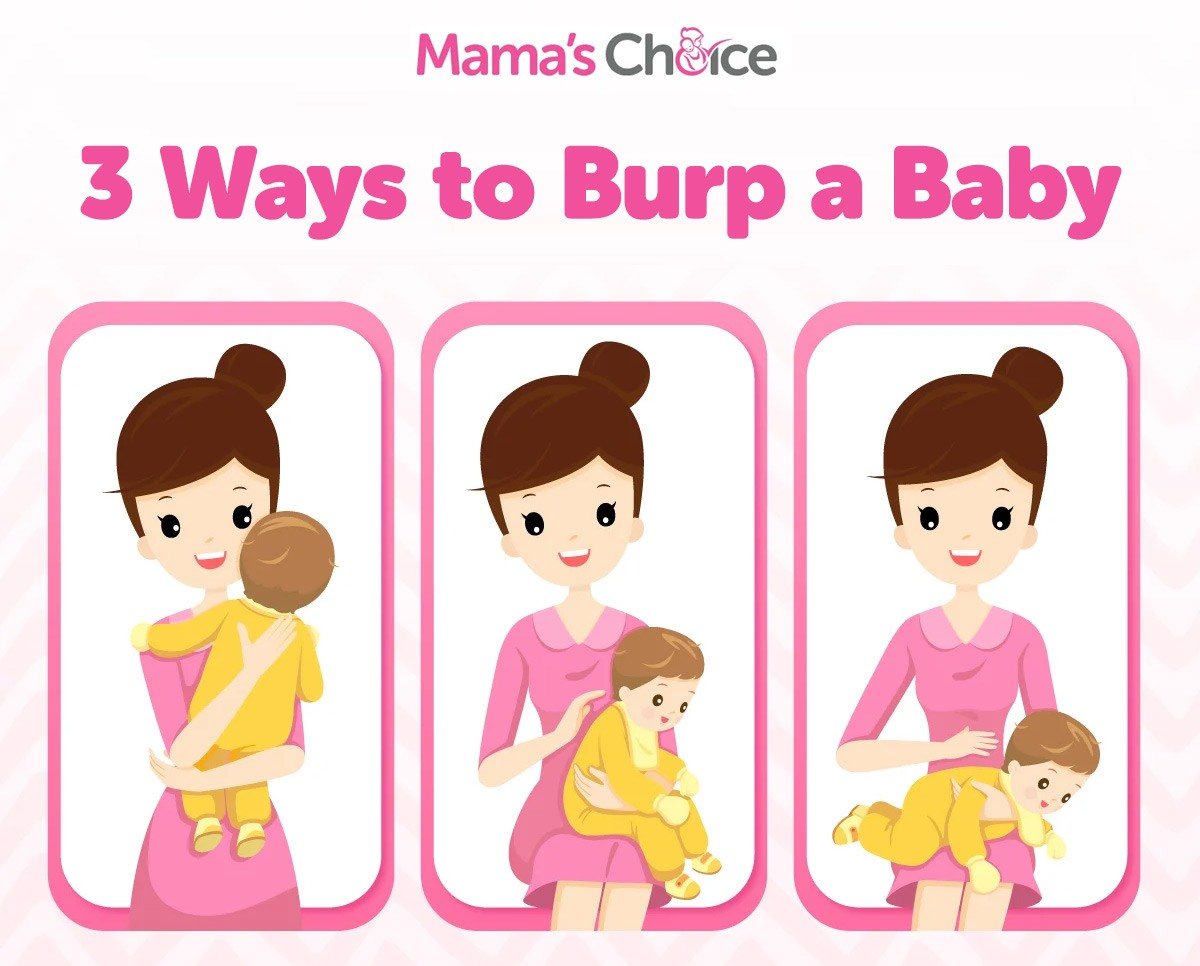Passing gas is common in babies, too. Here’s how to relieve gas pains in a baby when they seem uncomfortable and fussy!
New Mamas have a lot to deal with. From keeping track of their sleep schedule to ensuring they’re fed and bathed, gassiness is also another thing. In addition, mamas will have to learn to deal with it. Although it’s not always noticeable, did you know that babies can pass gas 13-21 times each day?
But what exactly is gas, you wonder? Gas is created when bacteria in the large intestine break down undigested food, releasing “odourless vapours” like carbon dioxide, oxygen, nitrogen, and sometimes methane. Most of the time, these gases are released through burping.
In babies, gassiness is usually caused by swallowing too much air or even from the food and drinks they consume. For breastfed babies, even the foods Mama eats are an important factor. Here are the common reasons behind gassiness in babies:
- Swallowing air from incorrect latch onto the breast
- Certain positions when drinking the bottle that causes swallowing air
- Drinking too fast or too slow
- Excessive crying
- Constipation
- New and certain foods like beans, lentils, asparagus, broccoli, cabbage, and onions
- Immature digestive tract
In an article on WebMD, paediatrician Jennifer Shu, MD, highlighted that fussiness while passing gas is normal. “If your baby is generally happy and only fusses for a few seconds while passing gas, that’s a sign that it’s normal,” she adds.
Signs and Symptoms of Baby Gas
Most of the time, a gassy baby is a fussy baby. However, it can be difficult for new Mamas to pinpoint gassiness as the cause behind a baby’s discomfort. Below are some common signs that point to gas as the culprit behind your baby’s fussiness.
- Red-faced
- Crying
- Squirming post-feeding
- Clenched fists
- Pulling legs up toward the tummy
- Passing gas
- Arching the back
- A bloated or swollen-looking stomach
5 Tips On How To Relieve Gas Pains In A Baby
Gassiness can occur in babies as young as a few weeks old. But, according to Katherine O’Connor, MD, an attending pediatric hospitalist at Children’s Hospital at Montefiore in New York City, “baby gas tends to be the worst when baby is 4 to 12 weeks old.”
At such a young age, it’s important to find safe and natural ways to relieve gas. So read on to discover different ways on how to relieve baby gas!
1. Burp your baby
Burping is hands-down the easiest way to give your baby some relief from gas. This works great as a preventive measure, too. Below are three great burping positions you can consider for your little one!
Tip: Burp your baby after a feeding. For breastfed babies, burp whenever you switch breasts. For bottle fed babies, burp after each ounce or two.
2. Tummy time
The gentle pressure on the baby’s stomach during tummy time can also help them pass gas. But of course, tummy time should always be supervised by Mamas.
Tip: Do not do tummy time immediately after feeding. Wait 20-30 minutes before doing tummy time.
3. Change baby’s bottle or breastfeeding position
Sometimes, the way a baby drinks milk plays a huge role in their gassiness. Consider using bottles with vents or other features that prevent babies from swallowing air for bottle-fed babies. Alternatively, you may also want to switch to nipples with a slower flow. In some cases, fast-flow nipples cause babies to swallow more air.
Tip: Whether breastfeeding or bottle-feeding, keep your baby’s head higher than the stomach. This helps prevent air from getting trapped to the bottom of the stomach and make it easier for your little one to burp.
4. Change your baby’s formula or diet
As mentioned above, some foods tend to give babies gas. You can create a food diary and start analyzing which foods are causing gas in your babies. If your baby is breastfed, you can also keep track of what you eat to see which foods in your diet contribute to your baby’s gassiness.
Moreover, certain formula milk brands are created for gassy babies. It might be helpful to consult with your child’s paediatrician if switching brands can help.
Tip: When introducing solids, start with one food at a time and start with easily digestible foods. Common gas-inducing foods are dark leafy greens, beans, and legumes.
5. Gentle baby massage
One of the most practical ways to help your baby pass gas is to do a gentle massage. Many Mamas are familiar with the “I love you” massage, which is a great way to help your baby pass gas.
To do this, place your baby on her back and use your hand to trace an upside-down letter ‘I’ on her tummy. Then, do the upside-down ‘L’ starting on the left side of your baby’s tummy. Lastly, trace an upside-down ‘U’ on your baby’s tummy.
The “Bicycle” massage is another preferred option by Mamas to help their babies pass gas. This is done by moving your baby’s legs vertically, mimicking the motion of riding a bike.
Tip: Avoid doing massages right after feedings because it can cause vomiting. Wait at least 45 minutes before doing a baby massage.
Check out the infographic below for more baby massage ideas to help relieve gas in your baby. Just follow the arrows, Mama!
With these tips on how to relieve gas pains in a baby, we hope you feel confident about what to do when your baby is showing fussiness and discomfort. Good luck, Mama!
Mama's Choice Team
A team of passionate writers, young mamas, and creative superheroes who help mamas face motherhood one educational article at a time!









